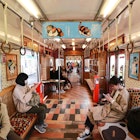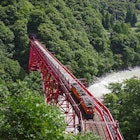
The cost of a Japan Rail Pass has more than doubled - is it worth it?

Oct 2, 2023 • 3 min read

The Japan Rail Pass is seeing a price hike © blanscape/Getty Images
The Japan Rail Pass offers an incredible – and until recently cost-effective – way to explore the country by train.
- placement: fullWidth
- path: articles/in-content-top
- possible size: [970, 250], [970, 90], [728, 90], [300, 250], [320, 50], [1, 1],
- targeting:
{ "url": "japan-rail-pass-price-increase", "destination": "Japan", "continent": "Asia", "country": "Japan" }
The passes, which set a flat fee for many rail journeys during a specific increment of time, are a favorite of travelers looking to pack in as much exploration as they can on the country’s vast and effective rail system. But now, a substantial price hike has been introduced, and took effect on 1 October 2023.
Is a rail pass still be a good deal for travelers? H
What’s changing, and by how much?
Most prices for the Japan Rail Pass went up by something like 69% – the first major rise in decades.
The increases for the six kinds of national Japan Rail Pass available, applicable to both regular seats and first-class “Green Car” seats, are as follows:
Regular seven-day pass: from $220 (¥29,650) to $372 (¥50,000): 69% rise
Regular 14-day pass: from $351 (¥47,250) to $595 (¥80,000): 69% rise
Regular 21-day pass: from $450 (¥60,450) to $744 (¥100,000): 65% rise
Green seven-day pass: from $295 (¥39,600) to $521 (¥70,000): 77% rise
Green 14-day pass: from $477 (¥64,120) to $826 (¥111,000): 73% rise
Green 21-day pass: from $620 (¥83,390) to $1041 (¥140,000): 68% rise
- placement: fullWidth
- path: articles/in-content-middle
- possible size: [970, 250], [970, 90], [728, 90], [300, 250], [320, 50], [1, 1],
- targeting:
{ "url": "japan-rail-pass-price-increase", "destination": "Japan", "continent": "Asia", "country": "Japan" }
Another big change is that there will no longer be a discount for purchasing the Japan Rail Pass outside of Japan before your trip. Children ages 6 to 11 will still enjoy half-priced passes.
That’s a big price hike, right?
Looking back, a seven-day pass in 2012 was roughly $210 (¥28,300), but I’ve seen similar pricing dating back well into the 1990s.
While inflation is inherently difficult to calculate across currencies, according to inflation calculators recommended by the Bureau of Labor Statistics and the Bank of England, prices would have increased in the US and the UK about 33% from 2012 to 2023. If you go back to 1998 (the earliest example I have of a JR Pass) the increase is roughly in line with inflation since then.

So, is the Japan Rail Pass still good value?
Previously, I have recommended that anyone who is doing more than a simple Tokyo–Kyoto return purchases the Japan Rail Pass, as you would be likely to save money just by doing more than a short round-trip.
Based on the new prices, it seems like my advice will likely change to anyone who is doing more than, say, Tokyo–Kyoto–Hiroshima–Tokyo will get good value out of the pass. If you’re really trying to see a lot of the country in a short amount of time, it’s likely to still be better value to use a pass.
- placement: native
- path: articles/in-content-native
- possible size: [f, l],
- targeting:
{ "url": "japan-rail-pass-price-increase", "destination": "Japan", "continent": "Asia", "country": "Japan" }
Another major benefit of the pass that shouldn’t be overlooked is its flexibility, which can be key for travelers. Fancy a quick day trip, or miss your train? No big deal if you already hold a pass.
While this may be bad news for budget travelers in Japan, we still have some tips for exploring Japan on a budget.
How does the pricing compare with other rail passes?
Pretty well, actually.
The seven-day European Eurail pass works out to $384 – but the two passes are not directly comparable: the days on that pass can be used over a month-long period, but seat reservations can be pricey, with many high-speed, international and inter-city trains requiring supplemental fares (often around $10–20 per high-speed train).
Meanwhile, the eight-day Swiss Travel Pass runs roughly $433, and supplemental reservation fees apply on tourist trains like the Glacier or Bernina Expresses.
Bottom line: for the amount of train you get for your money, the Japan Rail Pass is still a great deal. The pricing has just caught up with inflation and the rest of the market.
- placement: fullWidth
- path: articles/bottom
- possible size: [970, 250], [970, 90], [728, 90], [300, 250], [320, 50], [1, 1],
- targeting:
{ "url": "japan-rail-pass-price-increase", "destination": "Japan", "continent": "Asia", "country": "Japan" }
Explore related stories









 FoodRiding Japan’s ‘New Golden Route’: The vibrant cities of Tokyo, Kyoto and Osaka
FoodRiding Japan’s ‘New Golden Route’: The vibrant cities of Tokyo, Kyoto and OsakaFeb 17, 2021 • 8 min read
